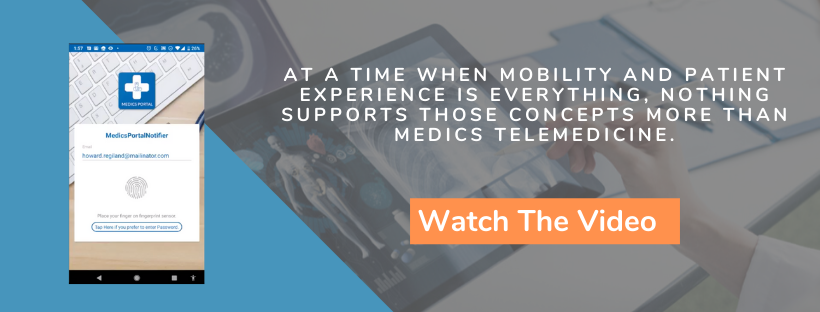4 Best Practices for Implementing a Telemedicine Program
Telemedicine Program Reinventing Traditional Medicine With Twenty-first Century Technology
If your organization is considering implementing a telemedicine program but you currently have limited experience with telehealth systems, it’s prudent to become familiar with industry best practices before you begin.
For context, medical professionals have been relying on telemedicine for almost a century now, with the World Health Organization reporting that the first descriptions of its use trace back to the beginning of the 20th century, when electrocardiogram data moved via telephone wires. The term “telemedicine” (healing at a distance) originated in the 1970s.
Modern technology such as high-definition video displays and mobile communication devices empower twenty-first century physicians to provide more in-depth services to their patients.
What once was considered an interesting, but not mainstream solution, telemedicine is now gaining popularity among patients and their physicians as a convenient, cost-effective health services option. With expanded broadband capacity along with compact, portable computer assisted technology, it is possible to virtually create an environment that closely mimics face-to-face exams and consultations.
Implementing a Telemedicine Program Requires Thoughtful Consideration & Patient-Centric Planning
Expanding medical services as a new revenue stream starts with creating a solid business plan that addresses finances, logistics, patient experiences and compliance issues. Telemedicine demands the same intentional planning process.
The following four best-practice suggestions lay the foundation for a smooth implementation.
#1 Focus on Technology
Deploy state-of-the-art technology, specifically large high-definition screens and superior quality audio equipment that allows physicians to observe speech patterns, body language, facial expressions and other outward signs that facilitate accurate diagnosis.
When serving outlying communities or helping patients manage chronic diseases such as diabetes, CHF, hypertension, or arthritis, consider supplying patients with user-friendly equipment that monitors glucose levels, blood pressure, and temperature. If possible, choose devices that communicate results directly to the electronic patient record via telephone or web-based connectivity. This will save time from having to integrate this vital health data on a manual basis.
Looking forward, you can expect to see even more innovations in technology to improve your patients’ telemedicine experience.
For example, individuals may exit the pharmacy carrying bags of smartphone-compatible gadgets along with prescription medications, as noted by Clinician Today. And when you need to provide medical assistance to patients in remote, rural locations or are tasked with tending to people during a disaster, solar power technology combined with telehealth equipment should allow for faster emergency response.
#2 Focus on Patient Experience
A small study conducted by Software Advice, reveals 67% of 519 patients polled said that remote visits either “somewhat” or “significantly” improved their experience. The study listed the perceived benefits of attending virtual healthcare appointments over in-person visits.
-
20% cited the convenience of consulting their healthcare provided from their own home
-
21% preferred not having to travel to a regular office
-
21% claimed virtual appointments had the same, or higher, quality of care as traditional in-office visits
-
71% said they would “somewhat” or “strongly prefer telehealth services over an ER visit for non-urgent medical needs, primary as a convenient, cost-saving option
In a value-based care delivery model, patient experiences and outcomes are primary considerations. Services must meet patient expectations via a convenient, affordable model.
#3 Focus on Privacy and HIPAA Compliance
Clinicians, physicians, counselors and other medical providers must deliver services within the standards established in the HIPAA Omnibus Act (2013). Before purchasing any equipment or software, verify the telehealth technology complies with all state, local and federal laws. If your business plan includes partnering with any third-party vendors for ancillary services, like transcribing video conversations or billing counseling sessions, review the Business Associates Contract Rule for covered entities.
HIPPA compliance includes responsibilities your organization may not have considered yet for telemedicine. For one, you’ll need to establish regular, offsite backups of patient data, protected by the strongest data encryption, as noted by Conference Technologies.
And it almost goes without saying, but your Telehealth program cannot rely on insecure channels such as SMS, Skype or email, as noted by HIPAA Journal. You’ll need to establish secure links, which is easier when done in consultation with HIPAA professionals.
#4 Focus on Financial Benefits
For patients, convenience ranks high on the list of reasons to seek online health services, including renewing their prescriptions and managing chronic health conditions. For providers, proactively managing the revenue stream and increasing productivity are major concerns. An ideal telehealth business plan incorporates strategies to improve opportunities to increase billable encounters.
For example, time spent on the telephone delivering test results, talking to patients about prescription refills and post-surgical follow-up consultations are typically considered part of the operating expenses every medical provider must absorb. Scheduling a remote office visit is billable in many situations, such as those mentioned above as well as routine counseling services such as weight loss and smoking cessation sessions.
You’ll need to consult with payers before determining which home devices to use in your new practice specialty. Keep in mind that many Medicare Advantage policies offer over the counter and durable medical equipment coverage that may defray the costs of patient supplies.
Furthermore, research shows that setting up telemedicine can reduce the high costs of patients needing to come back in for complications and other problematic events. According to Healthcare Finance News, “hospital readmissions within a month of discharge have cost over $16 billion each year. Telemedicine can be used to reduce readmissions and other adverse events at a cost that is less than the cost of the problems themselves.”
The report also noted that when you offer patients telemedicine appointments, you can reduce the level of unused capacity, offering patients lower fees for remote consultation compared to conventional, in-office encounters.
Follow Best Practices for Telehealth Services
Following these four best practices will help your organization to stay on the path of developing new revenue streams through providing services to patients in remote locations. Patients will appreciate the added convenience of telemedicine while your staff will find it can do more with limited time and resources. You can get a lot more out of Telehealth services by clicking here for our free, informative telemedicine video.
Key Takeaways:
- Telemedicine technology, which dates back to early 20th century with cardiogram data sent over telephone wires, now allows for a cost-effective way to mimic face-to-face encounters.
- A successful telemedicine plan will focus on technology using state-of-the art computers and software.
- Financial benefits include increasing staff productivity while minimizing burdens on staff time.
- You’ll need to consult with external partners such as payers to verify which home devices to use in your practice for telemedicine, so you can better meet patient expectations.
- Take time to ensure your Telehealth system is compliant with all governing agency requirements, relying on consultants if you lack internal expertise for this task.
- Robust technology supporting high-resolution imagery and audio is required for improving engagement as well as facilitating diagnosis and treatment plans.
About Christina Rosario
Christina Rosario is the Director of Sales and Marketing at Advanced Data Systems Corporation, a leading provider of healthcare IT solutions for medical practices and billing companies. When she's not helping ADS clients boost productivity and profitability, she can be found browsing travel websites, shopping in NYC, and spending time with her family.



